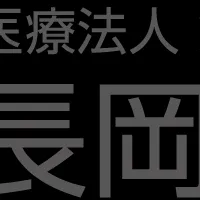
Lilly's Baricitinib Shows Promising Hair Regrowth in Teens with Alopecia Areata
Breakthrough Study on Hair Regrowth with Baricitinib for Adolescents
Recent findings from Eli Lilly and Incyte have brought hope to adolescents suffering from severe alopecia areata, a condition that leads to patchy hair loss. The results from the Phase 3 BRAVE-AA-PEDS study, presented at the American Academy of Dermatology's annual meeting, demonstrate that a significant portion of adolescent patients experienced notable improvements in hair regrowth.
Overview of Alopecia Areata
Alopecia areata is an immune-mediated disorder characterized by hair loss that can affect the scalp, face, and other body parts. Approximately 40% of individuals diagnosed with the condition report their first symptoms by the age of 20, making it particularly challenging for teenagers who are still developing their identities. The psychological and social impacts of the disease can be severe, contributing to issues like low self-esteem and anxiety.
Study Details
The BRAVE-AA-PEDS trial included 257 adolescent participants aged between 12 and 18 years, who were randomized to receive either 4 mg or 2 mg of baricitinib, a once-daily oral medication, or a placebo. The main goal was to measure the hair regrowth using the Severity of Alopecia Tool (SALT) score over 36 weeks.
At the 36-week mark, results revealed that:
- - 60% of patients who took 4 mg of baricitinib saw at least a 50% improvement in hair growth, compared to just 5.7% in the placebo group.
- - 42.4% of those taking the higher dose achieved 80% or more scalp hair coverage, while only 4.5% in the placebo group reached this level.
- - Notably, 50% of patients on 4 mg showcased significant eyebrow regrowth.
These findings indicate that baricitinib not only promotes noticeable hair growth on the scalp but also shows promise in regrowing eyebrows and eyelashes—an essential facet of overall appearance for adolescents.
Faster Regrowth in Adolescents
Intriguingly, the results suggest that adolescents may experience quicker and more robust hair regrowth compared to adults undergoing similar treatments. In previous trials for adults, it took longer to see comparable results, highlighting the potential unique effectiveness of baricitinib in younger populations.
Expert Commentary
Dr. Brittany Craiglow, a dermatologist and associate professor at Yale University, expressed enthusiasm about the initial outcomes of the study. She noted the challenges of treating early-onset alopecia areata, as traditional topical treatments do not always yield positive effects. The study suggests that baricitinib could be a beacon of hope for adolescents who may not have responded to other therapies.
Safety Profile
As with any medication, monitoring for potential adverse effects is crucial. The most commonly reported treatment-emergent side effects in the study were acne, upper respiratory infections, and influenza, with no serious unanticipated complications noted. The safety profile for baricitinib appeared consistent with previous studies involving other adolescent populations, like those with juvenile idiopathic arthritis.
Future Implications
These promising results pave the way for further exploration of baricitinib as a primary treatment for severe alopecia areata in adolescents. Eli Lilly plans to present additional data in future scientific meetings and hopes to move towards regulatory discussions for wider approval. This development represents a significant stride in addressing the complex needs of young patients suffering from this challenging condition.
The efforts of Eli Lilly and Incyte continue to highlight the importance of innovative treatments in enhancing the quality of life for individuals impacted by debilitating health issues. The quest for effective therapy in alopecia areata not only advances medical knowledge but also brings renewed hope to affected families worldwide.
Topics Health)










【About Using Articles】
You can freely use the title and article content by linking to the page where the article is posted.
※ Images cannot be used.
【About Links】
Links are free to use.